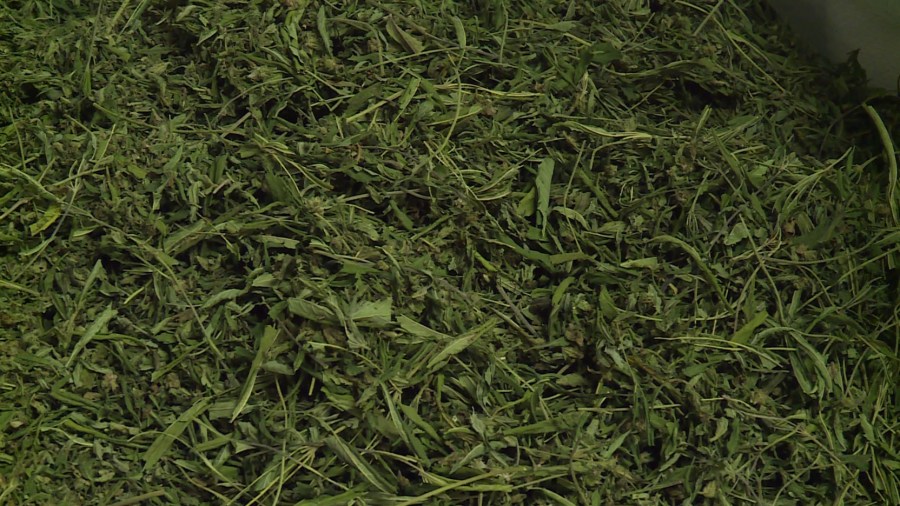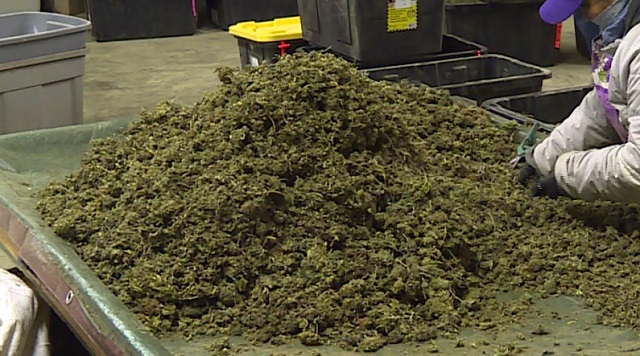PORTLAND, Ore. (KOIN) — As it’s poised to be one of the largest and most profitable crops in the Pacific Northwest—and the county—hemp is more popular than ever.
Hemp farming has seen enormous growth in recent years, after Congress loosened restrictions on the growth, sale, and possession of the plant with the passage for the 2018 Farm Bill.
But new opportunities come at a cost. For decades, hemp was federally illegal and largely overshadowed by its psychoactive, profitable cousin: marijuana. Now, this controversial and versatile plant is stepping into the spotlight with Oregon growers blazing the trail.
Adam Kurtz founded Fusion CBD in 2016 — just before the company’s namesake ingredient really took off in commercial products. CBD, projected to become a multi-billion dollar industry, is now found in everything from lotions to drinks, with customers curious about it’s reported health benefits.
That expanding demand understandably drew more and more farmers.
“Farmers heard the stories, you know, one farmer talks to another farmer and said, ‘Hey, I sold all my stuff for $50 a pound last year. I was making $100,000 an acre. I made $1 million off a eight acres,’ ” said Kurtz.
Beau Whitney, Chief Economist of Whitney Economics, said growers did get a bit ahead of themselves at first.

“A lot of the cultivators got a little bit out over their skis and didn’t know how to harvest, how to dry, how to transport,” said Whitney. “They hadn’t done the analysis of the entire supply chain to know how to get their product to market.”
To get to market, handlers take the crop and extract a crude oil from the plant’s biomass. Economists and industry insiders said the rush to grow—without a handling and processing industry in place—has created a backlog.
“Over the last several years, we’ve seen the number of farmers increase exponentially, we’ve also seen the numbers of handlers increase exponentially,” said Courtney Moran, President of Oregon Industrial Hemp Farmers Association—a hemp lobby. “The amount of handlers to manufacturers in the state has not been able to keep up with the number of acres actually being harvested.”
Moran said more than 1,900 Oregon farmers registered more than 63,000 acres of the crop last year. Compare that to less than 600 processors to take on harvested hemp. She said some of those processors and larger companies are now funding their own vertical growing operations to save money—pushing market prices down. Farmers who now try to jump in or convert from other crops may find themselves buying in without reaping the rewards they hoped for.
“A lot of the small mom and pops, three to five-acre, even 10-acre farms are not seeing the same outlets currently that they have in previous years,” said Kurtz.
Adding to the issue is some legal red tape as state and federal governments work to regulate this plant. Hemp is no longer considered a controlled substance — but there are still some gray areas around where it can be transported, how it’s grown, how the state is going to background check growers and how hemp is tested for levels of THC—the psychoactive cannabinoid component of marijuana.
Hemp does contain small amounts of THC, although it’s not enough to experience a “high.”

Unless current USDA standards change, any crop that tests above a 0.3% THC threshold cannot be used, even for products that aren’t ingested. Whitney said farmers are having to take a gamble on grows that may end up being a huge loss.
“A lot of them are losing out right now because they needed the revenue from this year’s harvest in order to pay for the seeds, and propagation, and preparation of their farms for next season,” he explained. “Currently, the rules say that they just have to till it under. So, they spend hundreds of thousands of dollars—if not millions of dollars—preparing a crop only to have no way to remediate it in case it tests hot for THC.”
“It’s going to take some sense of urgency at the federal level, especially at the FDA and USDA, in order to clarify their regulatory rule set in order to allow operators to understand the rules of the game,” said Whitney.
This is potentially holding back what Whitney said could be one of the biggest cash crops in the U.S.
“There’s over 23,000 jobs associated with the hemp industry in Oregon today,” he said. “Because some of the farmers are distressed coming out of the gate, there’s going to be an employment impact in addition to the revenue impact that these farmers are facing.”
Still, people are optimistic that getting over these hurdles will open up even more doors for hemp here at home and abroad. Beyond CBS, the plant has untapped potential as a food source for people and animals — even a building material. These are all products that Oregon could some day export globally.
“We’ve had incredible support for our congressional delegation,” Moran said. “Not only in Oregon, but in our federal congress to support the development of the program.”
“This plant can do so many amazing things and I’m very excited for the future of what this plant can do.”
What happens from here?
The USDA just closed a public comment period about how hemp should be regulated and how these programs should look. Over the next few years, farmers could be eligible for USDA programs like insurance and farm loans in order to grow and protect their products just like other crops.
In the meantime, it’s a question of who is strong enough to survive the industry’s ups and downs.